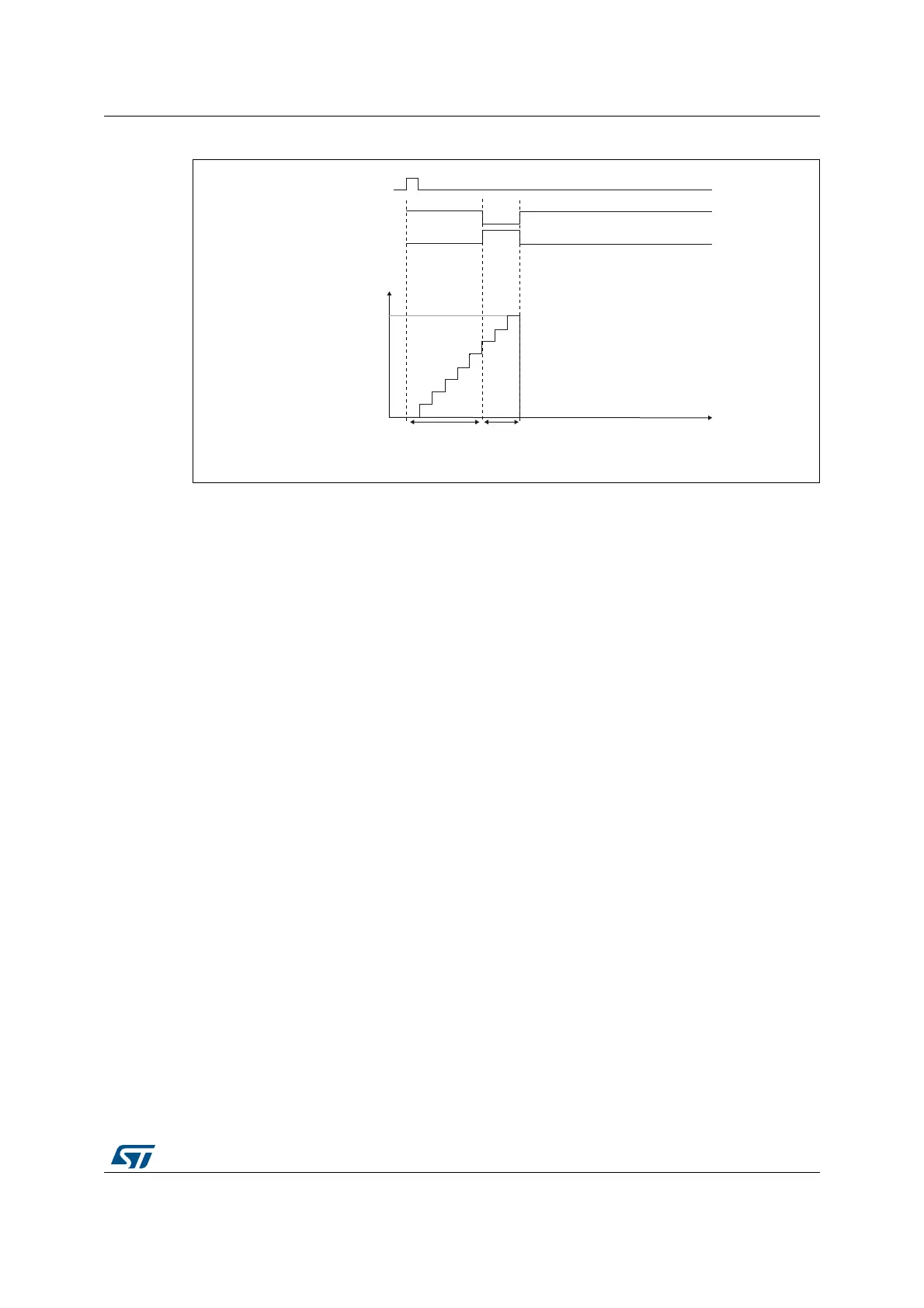RM0401 Rev 3 407/771
RM0401 General-purpose timers (TIM9 and TIM11)
436
Figure 152. Example of one pulse mode.
For example one may want to generate a positive pulse on OC1 with a length of t
PULSE
and
after a delay of t
DELAY
as soon as a positive edge is detected on the TI2 input pin.
Use TI2FP2 as trigger 1:
1. Map TI2FP2 to TI2 by writing CC2S=’01’ in the TIMx_CCMR1 register.
2. TI2FP2 must detect a rising edge, write CC2P=’0’ and CC2NP = ‘0’ in the TIMx_CCER
register.
3. Configure TI2FP2 as trigger for the slave mode controller (TRGI) by writing TS=’110’ in
the TIMx_SMCR register.
4. TI2FP2 is used to start the counter by writing SMS to ‘110’ in the TIMx_SMCR register
(trigger mode).
The OPM waveform is defined by writing the compare registers (taking into account the
clock frequency and the counter prescaler).
• The t
DELAY
is defined by the value written in the TIMx_CCR1 register.
• The t
PULSE
is defined by the difference between the auto-reload value and the compare
value (TIMx_ARR - TIMx_CCR1).
• Let’s say one want to build a waveform with a transition from ‘0’ to ‘1’ when a compare
match occurs and a transition from ‘1’ to ‘0’ when the counter reaches the auto-reload
value. To do this PWM mode 2 must be enabled by writing OC1M=’111’ in the
TIMx_CCMR1 register. Optionally the preload registers can be enabled by writing
OC1PE=’1’ in the TIMx_CCMR1 register and ARPE in the TIMx_CR1 register. In this
case one has to write the compare value in the TIMx_CCR1 register, the auto-reload
value in the TIMx_ARR register, generate an update by setting the UG bit and wait for
external trigger event on TI2. CC1P is written to ‘0’ in this example.
Since only 1 pulse (Single mode) is needed, a 1 must be written in the OPM bit in the
TIMx_CR1 register to stop the counter at the next update event (when the counter rolls over
from the auto-reload value back to 0). When OPM bit in the TIMx_CR1 register is set to '0',
so the Repetitive Mode is selected.
069
7,
2&5()
&RXQWHU
W
7,0B$55
7,0B&&5
2&
W
'(/$<
W
38/6(

